What Are The Best Budget Friendly LiveScope Options?
UPDATED 03 NOVEMBER 2023
by Robert Ceran
This article may contain affiliate links. If you make a purchase after clicking on a link we may earn a small commission at no extra cost to you.
My bass fishing buddies often ask me about the cheapest LiveScope setup they can get for their boat.
Many of them already have a full Lowrance or Humminbird sonar setup for their boat, and just want to get LiveScope as an add on, but without breaking the bank.
In order to answer this question, I set out to test the least expensive Garmin LiveScope setups, and evaluated each of them on their screen size, resolution, overall image quality, and price.
Based on my testing, here is my pick of the cheapest Garmin LiveScope setup that still delivers a great performance on a small budget:
- Transducer: Garmin LiveScope System
- Display unit: Garmin Echomap UHD 93sv (without transducer)
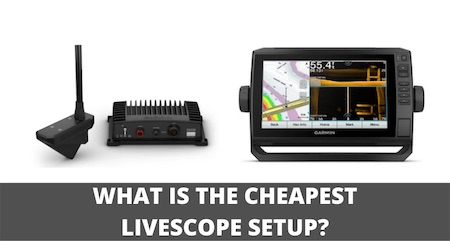
Best LiveScope for the money
| Model | Image | Price |
|---|---|---|
| Garmin Panoptix LiveScope System |  | |
| Garmin Echomap UHD 93sv (without transducer) |  |
The chart above shows the best Garmin LiveScope bundle on a small budget.
While this is not the absolutely cheapest LiveScope bundle (which I’ll give you below), it retails at a highly competitive price while still providing the full power of LiveScope imaging combined with a generous 9 inch display unit.
If you decide to go for this option, remember to buy the Echomap UHD display unit without a transducer in order to get the best price.
Keep in mind that when choosing the cheapest LiveScope fish finder setup, it’s essential to find the right balance between the lowest price possible with a sufficiently high quality user experience.
Now let’s take a closer look at the specs of the bundle above, as well as the other options available on the market, so you can decide which one works best for your purposes.
LiveScope Transducers
If you want LiveScope on your boat, the first thing you’ll need to get is a Garmin LiveScope transducer, which comes in three different versions:
- LVS32 transducer (part of the original Panoptix LiveScope System)
- LVS34 transducer (part of the improved LiveScope Plus System, which was released in 2022)
- LVS12 transducer (sold as a stand-alone transducer)
Let’s take a closer look at the LVS32 and LVS12 transducers, as they are the most budget friendly options.
Panoptix LiveScope System
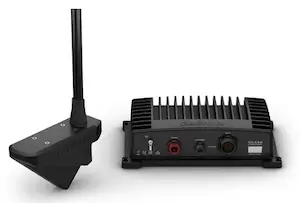

The Panoptix LiveScope System is the most commonly used option for setting up LiveScope, and is available at a reduced price in most places.
While not exactly cheap, based on my testing this is currently the minimal setup you need to get for high quality LiveScope imaging.

The package includes a Panoptix LVS32 transducer, a GLS10 sonar black box, a trolling motor mount, and a transom mount.
Panoptix LiveScope LVS12 Transducer
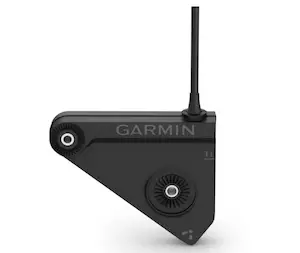

The LVS12 transducer retails at a lower cost, and while it is significantly cheaper than the Panoptix LiveScope System, keep in mind that it comes without the GLS10 sonar box, which is responsible for assembling the image from the sonar data into a high quality image on the display.
During my testing, I found that the GLS10 box is essential if you want to get the full power of forward facing sonar.
My tests showed that the quality of the LiveScope imaging you get with the LVS12 transducer is much lower than what you get with the LiveScope System.
Also, during my testing I found that the LVS12 has a lower range and a narrower sonar cone, and so only shows a small area in front of the boat.

Due to these shortcomings, I highly recommend getting the LiveScope System instead of the stand-alone LVS12 transducer, if you’re serious about getting high quality LiveScope imaging.
If your’e also interested in the latest version of this setup, check our our article on what transducer comes with the new LiveScope Plus?
What display units should you use with LiveScope?
Now let’s talk about the cheapest display units you can pair with the LiveScope System.
Which display unit should you pair with which LiveScope transducer in order to get the best LiveScope performance, while keeping the cost to the absolute minimum?
If money weren’t an issue, I would recommend the largest Garmin unit with a 24 inch display.
But in order to keep the price as low as possible, I suggest choosing one of these smaller display sizes: 7 inch, 9 inch, or 10 inch.
While the most budget friendly LiveScope option is undoubtedly a 7 inch display, based on my testing I instead recommend a 9 inch display as the smallest option that is still big enough (and comes with enough screen resolution) to handle the high quality sonar data provided by the LiveScope System.
Garmin Echomap UHD 73sv
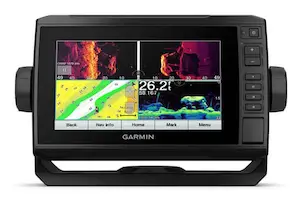

This is the cheapest display unit that you can combine with the Panoptix LiveScope System, and the Echomap UHD 73sv can be a good choice if you’re okay with the relatively small 7 inch display size.
If you’re already running a fish finder setup on your boat, you’ll probably want to buy the Echomap UHD 73sv without a transducer, and pair this unit with the LiveScope System.
Without a transducer, the UHD 73sv retails at a very competitive price in most outlets, so the total cost combined with the LivesScope system is very affordable, giving you access to the cheapest forward facing sonar on the market.
Bottom line: The Echomap UHD 73sv is the cheapest display unit that you can pair with a LiveScope System, but my testing revealed that the small 7 inch screen doesn’t provide a great user experience when using LiveScope, which is why I recommend going with a 9 inch display instead.

Based on my test results, a 7 inch screen isn’t really big enough to get the full benefit of LiveScope imaging. So I would recommend getting a 9 inch display unit at minimum, since that will enable you to harness the full power of LiveScope, which can provide you with incredibly detailed real time imaging while you retrieve your lure.
Garmin 93sv plus (discontinued)
This used to be the best option for setting up a cheap LiveScope pairing, but unfortunately it has been discontinued by Garmin.
If you can still get your hands on a 93sv plus unit, don’t hesitate to go for it, since it provides the best value for money as an affordable LiveScope setup.
Next let’s take a look at the unit that Garmin created as a replacement for the 93sv plus:
Garmin Echomap UHD 93sv
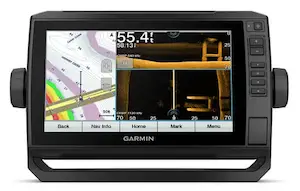

The Echomap UHD 93sv is an improved version of the 93sv plus that has a UHD transducer, which is a big deal in terms of improved image quality.
And fortunately, the price increase for the Echomap UHD 93sv is only 50 dollars more compared to the discontinued 93sv plus, which isn’t so bad. If you get the Echomap UHD 93sv without a transducer, it costs a little more than the UHD 73sv.
So you would have to invest a little more for the cheapest 9 inch display unit to pair with a LiveScope transducer.
When combined with the Panoptix LiveScope transducer system, this bundle would set you back by a little more, but during my testing this setup resulted in a much better user experience, coming with a more generous display size to view LiveScope sonar data.
Bottom line: The Echomap UHD 93sv is the cheapest 9 inch display unit compatible with the Panoptix LiveScope System, and my tests show that this pairing currently provides the best LiveScope bundle for the money.

A great way to run this setup is by mounting the LVS32 transducer facing forwards on your bow mount trolling motor, with the Echomap display set up at the front of the boat.
That way you can face forward while casting, and observe fish, structure, as well as your lure on the 9 inch display in real time.
If you decide to get the Echomap UHD 93sv with its transducer, that would provide you with ultra high definition Garmin Clearvu (i.e. down imaging), Sidevu (i.e. side imaging), as well as CHIRP sonar.
Garmin GPSMAP 1022
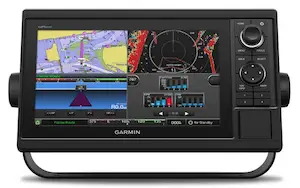

This is the cheapest 10 inch display unit compatible with LiveScope. Also, unlike the smaller units discussed above, the GPSMAP 1022 enables you to record your LiveScope readings, which can be an important factor if you want to create video footage.
With the UHD 73sv and UHD 93sv you need to use an external camera pointed at the screen in order to record your LiveScope readout.
The GPSMAP 1022 was designed as a slave unit without a transducer, and is instead built to network with other Garmin units, and to display sonar and mapping data on its generous screen with 1024 pixel resolution.

It has a non-touch display, using a control wheel for navigation purposes.
The GPSMAP 1022 retails at a slightly higher price, and while this definitely isn’t cheap, my tests showed that it provides high quality LiveScope imaging at a very affordable cost, and can be readily combined with an existing fish finder system on your boat.
Gear and methods used for testing
For consistent testing results, I tested each setup under similar conditions on Lake Tarpon in Florida. Transducers were mounted on a Garmin Force trolling motor on the bow of a Ranger Z520R bass boat, and testing was performed by imaging schools of largemouth bass, crappie, and bluegill relating to structure in 5 to 20 feet of water.
